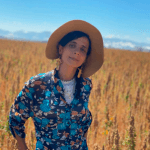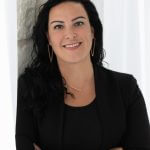Doris Brown
Houston, Texas
This previous interview with Doris was conducted by Carly Schmidt July 29, 2022. To learn more about Doris’s work visit http://www.weststreetrecovery.org/.
Transcript
What is your role at West Street Recovery and how did you get started with the organization?
I got started with West Street Recovery in 2018 because I was a client. I had been denied by FEMA when my house flooded – but we all expected that – so a friend of mine was able to connect me to West Street Recovery and that’s when I met the most amazing group of millennials I’ve met in a long time. Not only did they say what they were going to do, they actually put action to their words. So, I was a part of West Street Recovery far before I became a staffer. I met them in 2018 and I didn’t get on staff until June of 2020.
At West Street Recovery I am the co-director of research, organizing, and special events. That means, when we start having protest marches, I go back and forth to lobby the City of Houston and the County to set it up. We also do drain cleaning in different neighborhoods to address the risk of flooding. We are trying to mitigate flooding in five different zip codes in the northeast part of Houston. In 2018, me and a bunch of neighbors became a grassroots group called the Northeast Action Collective. We’ve been growing in the neighborhoods and communities and we’re slowly building power.
How did these two groups come together and what drove you to create the Northeast Action Collective?
The two groups got together because West Street Recovery was working on houses in 2018 and the Northeast Action Collective wanted to learn how to advocate for ourselves. That’s what the training that West Street Recovery offered did and we liked the work that they were doing.
I’ve advocated here since I was 12 years old because I didn’t like the word “colored.” I started sitting in with the college kids when I was 14 at the F. W. Woolworth downtown. We’d sit on the stoop all day long. They wouldn’t give us water, they wouldn’t sell us soda or slices of pizza. I made a deal with my mom that, if I kept a B-average, I could advocate three days a week. So, I had to keep a B-average because I still wanted to raise Cain about Civil Rights. Even though I wasn’t old enough, I just knew it was important.
And that’s my job at West Street Recovery. I organize and we do a lot of research where we get our members and volunteers together so we can gather data so, when we go to City Hall or the county, we have proof of what they’ve not been doing in our neighborhoods. They’re getting the money to do this work, but it’s not being done; and I tell them that their criteria from the 1950s and ’60s is racist. I feel like if it’s not right, I’m going to fight, and I’ve had that mentality all my life.
How did your partnership with River Network start and how did it support the community work you were already doing?
We met Diana [Toledo, River Network’s Senior Director of River Programs], who heard about us from other groups, and we brainstormed a research project that would illustrate the widespread issue of flooding in Northeast Houston. We went out and surveyed the communities. We moved around in different neighborhoods in the Northeast and collected a lot of data.
We applied for this funding to support gathering data from different communities. We wanted language inclusion because a lot of our members were Latinx. We are a horizontally structured group that’s all inclusive and we did not want language to be a barrier. We made provisions for that and did the surveys in English and Spanish. We asked questions about the amount of flooding people are experiencing and the level of confidence in the federal support. Safe to say, it was lacking.
Most everyone felt that the government was always going to let us down and that they had disinvested in these communities. They felt that they would flood again. They felt expendable. Everyone had some kind of trauma and anxiety triggered by even a heavy rain. Many people drained their savings to get their houses fixed after Hurricane Harvey. Many of them are still suffering from that event. I learned that the Black and brown communities never get a chance to recover before the next disaster hits.
The last the network heard about this project, you shared that “making this information stand out and leveraging it for real change is the next step.” How has this data been used since you published results in 2021?
We published our research emphasizing the community as the experts because they know what they need. Decisions were being made with data from the 1970s and ’80s: that data is old! If you don’t go to those neighborhoods and talk to the people, you don’t really know what’s happening. We collected this data to make recommendations to the city, the county, and the state.
We have been on committees and presented our recommendations to FEMA. We have data that shows that, for every disaster, the Black and brown communities lose about $30,000 while the more affluent neighborhoods gain anywhere from $50,000-$100,000. The criteria is built for the affluent neighborhoods and doesn’t include us. So, we advocate and learn to speak for ourselves.
What has been the response of FEMA, the county, and others to your recommendations?
They were receptive! Many of the people who heard these presentations were shocked by the information. It was an eye-opening experience for them because, if you’re sitting in your office in your ivory tower and you never put boots on the ground, how are you to know what’s happening in the neighborhood? And their data is out of date. Our data is recent, and represents the people that these agencies are supposed to be serving. We got asked so many questions over and over again, like “Can I get a copy of that to show my staff?” So yes, we were heard. They instituted a new framework because many of them were putting profit over people, and we told them that. We went to them and spoke what was in our hearts and minds. Our community members were able to attend! We’re sitting there in our yellow shirts testifying and advocating for ourselves, I was so proud of us.
What comes next after such a huge victory for Northeast Houston?
We have a disaster preparedness program going that has just taken off. When we do presentations, we tell the community what we’re doing. We set up hub houses and distribution centers for our members in different parts of Northeast Houston. West Street Recovery came into being because they came to help evacuate the Black and brown communities during a disaster and recognized the need.
When it comes to disaster, we are the first with boots on the ground, and we explain to the municipalities and other organizations how we do that. We already have a plan. We don’t know what the next disaster will be, but we will be ready for it. For example, we found out that a lot of seniors are worried about electricity going out with nothing to power their oxygen machines or keep insulin cold. We have documented who those people are and have hub houses nearby. These hub houses have generators, go-bags, batteries, life jackets, essentials, and hygiene products.
It’s always what’s next, what can we do to support the people in the community? We have an open meeting every Wednesday, and we try to do it at least once a month in person. The community has ideas, and we work on those ideas together. You never know what the community will bring. Nurses in the community have hosted training on heat exhaustion, we play out scenes on different emergencies, and we have a WhatsApp chat for when a disaster hits. We’re a family and we keep in touch with each other. I’m proud to say that other neighborhoods around Houston are incorporating these ideas.
About
Doris is West Street Recovery’s Co-Director of Community Research, Organizing, and Special Events. She is also a co-founder of the Northeast Action Collective (NAC). She graduated from Houston Community College with a degree in Human Service Technology and Certification in Mental Health. In 2016 she graduated from the University of Houston with a Bachelor of Science in Interdisciplinary Studies. She joined staff at West Street Recovery in June of 2020.
West Street Recovery (WSR) is a horizontally structured grassroots organization in Houston, Texas, which aims to use the disaster recovery process to build community power. Their work is rooted in an understanding that disasters amplify previously existing inequalities. There are no natural disasters: the destruction of climate disasters is produced by social, racial, and political factors. Throughout the disaster recovery process, marginalized people and their communities are denied access to resources and influence; the same actors and forces which produced these inequities cannot be expected to deliver a just recovery. We aim to shift resources and decision-making power to flood survivors and frontline communities, because the people most harmed by storms are also the ones who best understand what can protect them in the future.







